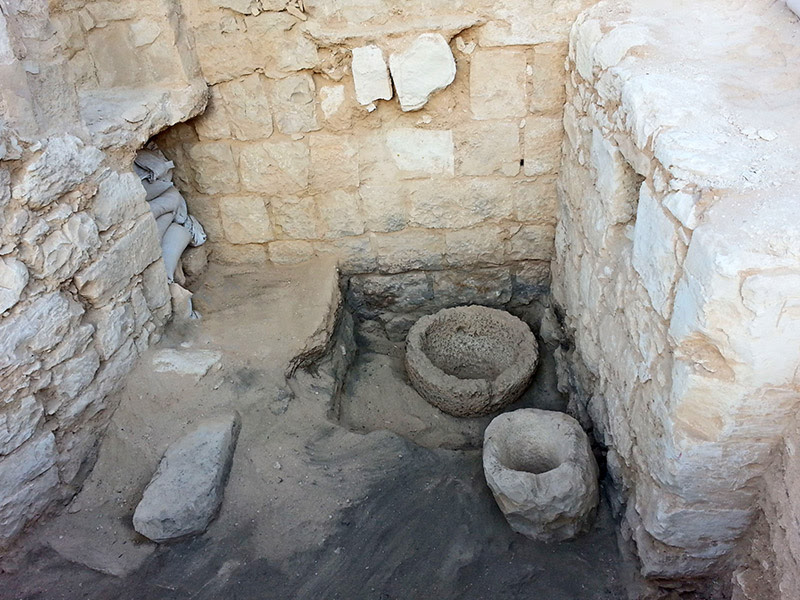Ancient Stable Discovered in Negev

A structure that was apparently used as a livestock stable in the Byzantine period was recently revealed in an excavation the Israel Antiquities Authority carried out in the Avdat National Park in the Negev.
The stable, which was constructed in one of the rock-hewn caves on the mountainside, was used as a service structure by the local residents. It was divided into a number of stone-built rooms, whose walls were adorned with painted decorations. Stone basins were also discovered that were probably used for storing food and water for the animals.
According to Professor Scott Bucking of DePaul University in the United States and Dr. Tali Erickson-Gini of the Israel Antiquities Authority, “The identification as a stable was corroborated by a thick layer of organic matter (donkey, sheep and goat manure) on the floor of the building. It seems that the place was destroyed by an earthquake that decimated the city of Avdat in the early seventh century CE.”
Students from the Har Ha-Negev Field School participated in the excavation. They sifted the many hundreds of buckets of organic matter that were excavated in the stable under the guidance of Daniel Fox, an archaeo-botanist on behalf of the Bar Ilan University.
They collected seeds and various small organic remains that in the future can shed further light on the use of the building, and other questions, such as what food the local inhabitants consumed and what was the environment in antiquity. The researchers hope that the grape seeds they found, which were well-preserved because of the dry conditions that prevail in the region, will allow them to extract the DNA of the ancient plant and identify the different species that were grown in the area.
To Read The Full Story
Are you already a subscriber?
Click "Sign In" to log in!

Become a Web Subscriber
Click “Subscribe” below to begin the process of becoming a new subscriber.

Become a Print + Web Subscriber
Click “Subscribe” below to begin the process of becoming a new subscriber.

Renew Print + Web Subscription
Click “Renew Subscription” below to begin the process of renewing your subscription.












